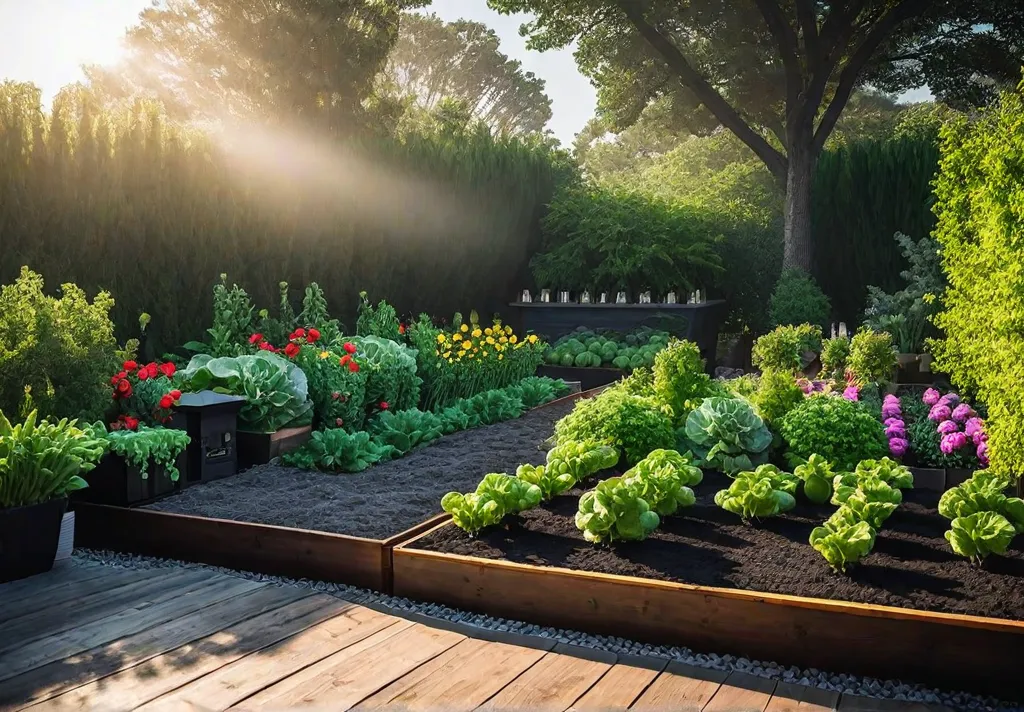Have you ever dreamed of growing fresh, delectable produce in your backyard? If so, you’re in the right place! As a true Southern belle at heart, I’ve always deeply appreciated the art of vegetable gardening. There’s just something so rewarding about nurturing your plants from seed to harvest and enjoying the fruits (or veggies!) of your labor.
Whether you’re a seasoned green thumb or a complete novice, starting a vegetable garden can be an incredibly fulfilling hobby. Not only does it allow you to connect with nature and enjoy the great outdoors, but it can also save you a significant amount of money on your grocery bill. Studies show home-grown produce can save families up to $700 annually [1]. And let’s not forget the health benefits – your homegrown veggies will be free from harmful pesticides and packed with more nutrients than their store-bought counterparts.
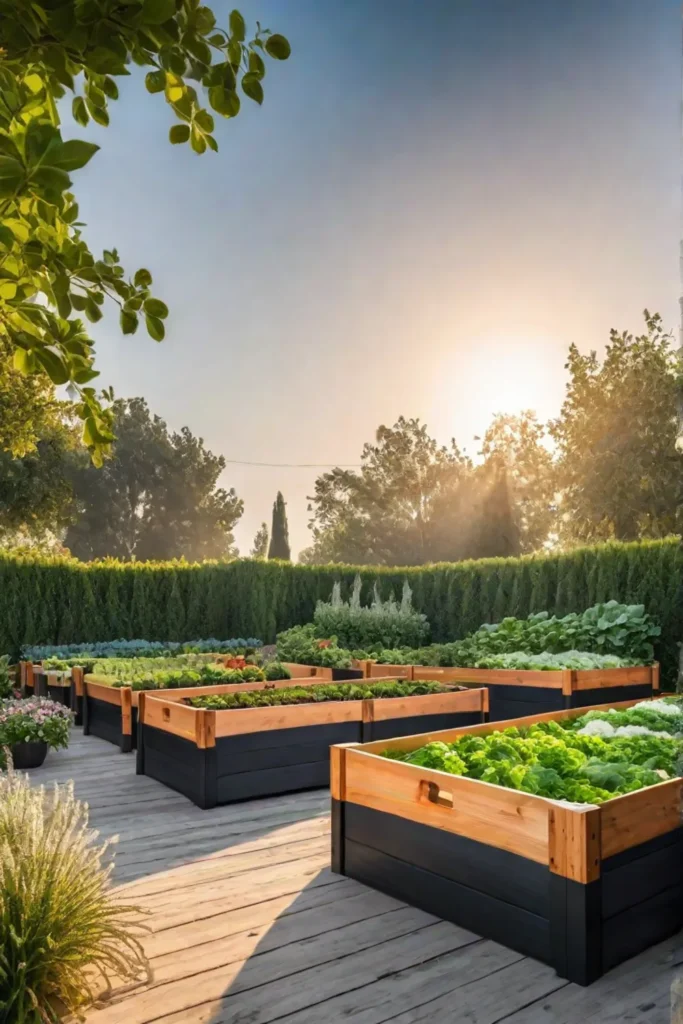
In this comprehensive guide, I’ll take you through every step, from choosing the perfect location for your garden to harvesting and preserving your bountiful crop. So, grab your gardening gloves and prepare to embark on an exciting journey from seed to table!
Choosing Your Vegetable Garden Location
The first and perhaps most crucial step in starting your vegetable garden is selecting the right location. Like with real estate, the mantra “location, location, location” holds when it comes to growing a thriving garden.
The ideal spot for your vegetable patch should receive at least 6-8 hours of direct sunlight each day. Most veggies are sun-loving plants and won’t thrive in shady areas. However, some leafy greens and root vegetables can tolerate partial shade, so keep that in mind as you scout out the perfect location.
In addition to sunlight, you’ll also want to consider the quality of your soil. Healthy, well-draining soil is essential for your plants to flourish. Look for signs of good drainage, such as the absence of standing water after a rain shower. If your soil is heavy and clay-like, you can improve it by adding organic matter like compost or aged manure.
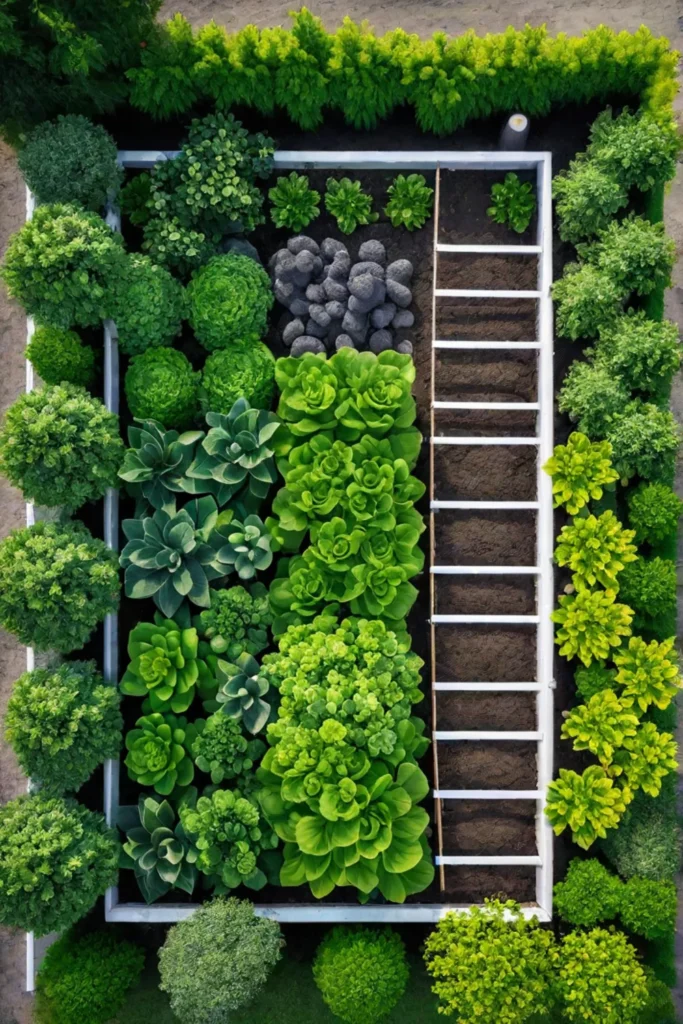
Accessibility is another important factor to consider. Your garden should be situated in a spot that’s easy to access, as you’ll spend a lot of time tending to it. And don’t forget to think about the overall space you have available – make sure to choose a location that can accommodate the size of your desired garden.
Once you’ve found the perfect spot, it’s time to start preparing your planting beds. But more on that later!
Preparing Your Planting Beds
With the location of your vegetable garden sorted out, it’s time to turn your attention to the soil. Proper bed preparation is the foundation for a thriving garden, so getting this step right is crucial.
Begin by tilling or double-digging the soil to loosen it up and improve its structure. This will allow for better air and water penetration, which your plants love. Next, it’s time to add some organic matter to the mix. Compost or well-rotted manure can work wonders, improving the soil’s nutrient content and water-holding capacity.
If space is limited, consider creating raised beds or mounds. These elevated structures improve drainage and make it easier to access your plants. Fill them with a nutrient-rich soil blend to give your veggies the best possible start.

As you prepare your beds, it’s also a good idea to test the soil’s pH. Different vegetables thrive in various soil pH levels, so knowing where your soil stands is crucial. For example, tomatoes prefer slightly acidic soil (around 0-8), while broccoli does better in a more alkaline environment (5-5). You can easily test your soil’s pH using a simple kit from your local garden center.
Once your beds are ready, you can start thinking about what to plant. But before we dive into that, let me share a little-known fact: cover cropping can be an excellent way to improve your soil’s health and suppress weed growth. Plants like clover or winter rye can be sown in the off-season to add organic matter and beneficial microorganisms to your garden.
Selecting and Planting Your Vegetables
Now comes the fun part—choosing which vegetables to grow! This decision will depend on several factors, such as your climate, personal preferences, and the amount of space you have available.
When selecting your vegetables, it’s important to consider their growing requirements. Some plants, like tomatoes and peppers, thrive in warm, sunny conditions, while leafy greens and root vegetables can tolerate a bit more shade. Pay attention to the recommended planting times for your region, as well – you don’t want to put your seedlings out too early and risk them succumbing to a late frost.
Another interesting tidbit: many of our common vegetable crops have ancient origins, with some dating back thousands of years. Tomatoes, for instance, were first cultivated by the Aztecs, while potatoes originated in South America. Knowing a bit about the history of your favorite veggies can add an extra layer of appreciation to your gardening endeavors.
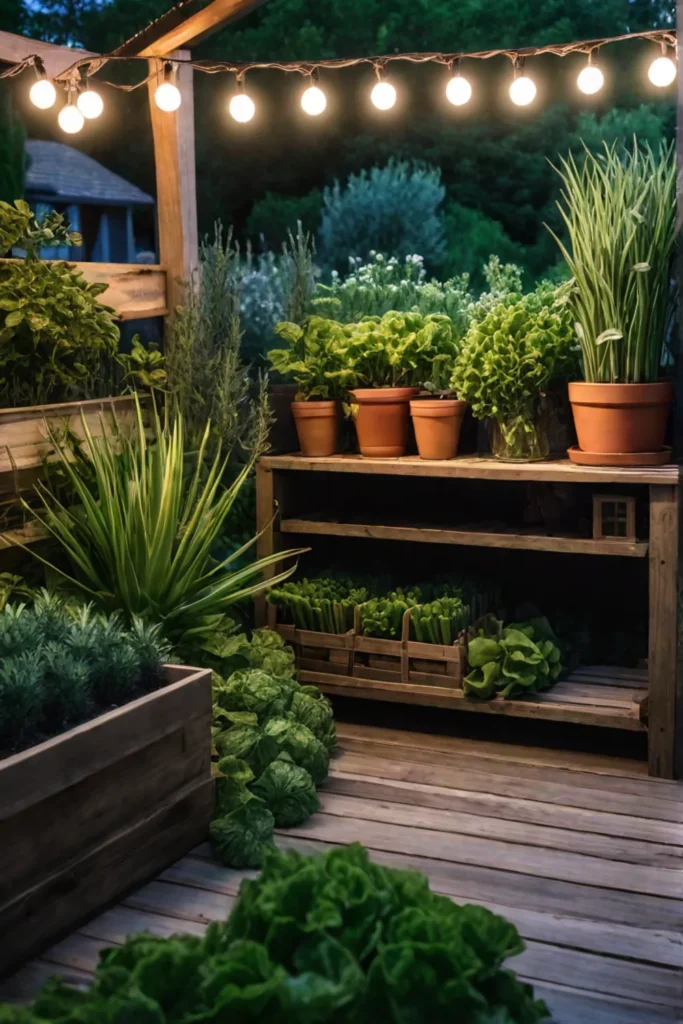
Once you’ve selected your vegetables, you must decide whether to start them from seed or purchase seedlings. Starting from seed can be a rewarding process, but it does require a bit more planning and attention. If you opt for this route, start your seeds indoors at the right time and gradually acclimate the seedlings to the outdoor environment before transplanting.
Consider incorporating succession planting into your garden plan to ensure a continuous harvest throughout the growing season. This means sowing crops in stages, so you always have something ready to pick. Leafy greens, radishes, and some beans are excellent candidates for this technique.
Caring for Your Vegetable Garden
Congratulations! Your vegetable garden is now planted and ready to thrive. But the work doesn’t stop there. Consistent care and attention are essential to maintaining a healthy, productive garden.
Let’s start with watering. Most vegetables require about 1 inch of water per week, but this varies depending on temperature, humidity, and soil type. Aim to water in the morning, as this allows the soil to absorb the moisture before the day’s heat causes excessive evaporation. Drip irrigation and soaker hoses are great water-saving options that deliver moisture directly to the plant’s roots.
Weeding is another crucial task, as you don’t want your veggies competing for nutrients and water with pesky weeds. Fortunately, some natural weed control methods can help, such as applying a layer of organic mulch or planting cover crops during the off-season.
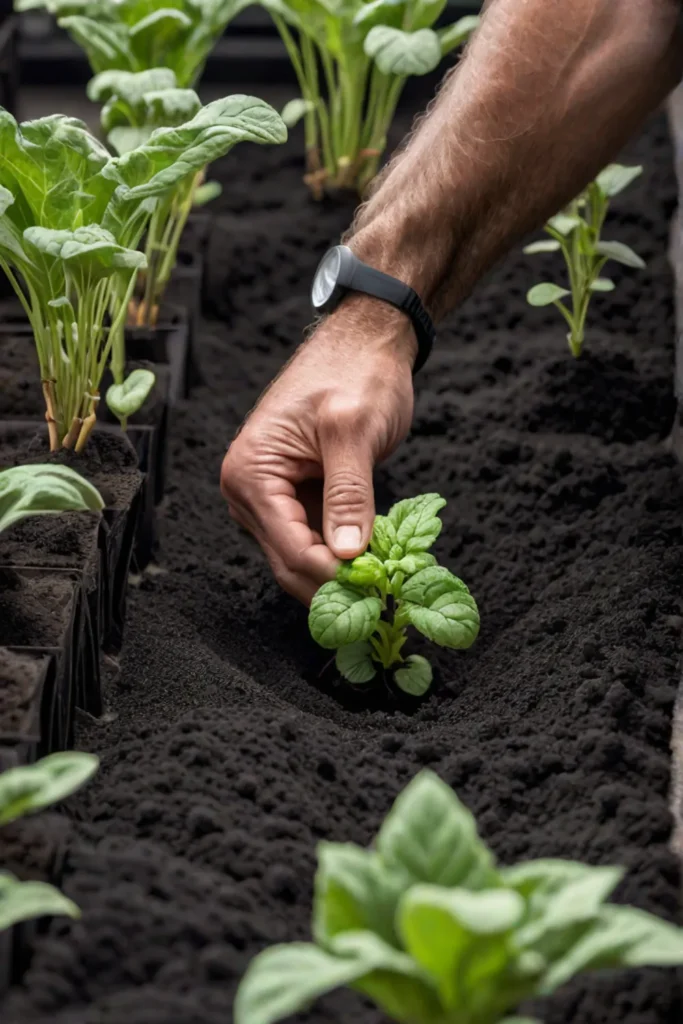
Regarding fertilizing, organic options like compost and bone meal can work wonders for your garden’s soil health and nutrient levels. These amendments not only provide essential nutrients for your plants but also help to improve soil structure and water retention.
Last but not least, let’s talk about pest management. While it’s impossible to eliminate all pests from your garden, you can use plenty of organic control methods to keep them at bay. Beneficial insects like ladybugs and lacewings are natural predators that can help control aphids and other soft-bodied pests. You can also try using neem oil or diatomaceous earth to target problem critters without harming the environment.
Harvesting and Preserving Your Produce
The moment you’ve been waiting for has finally arrived—it’s time to harvest your hard-earned veggies! But before you start picking, it’s important to know the optimal harvesting times and techniques for each crop.
For example, tomatoes are best picked when fully ripe, with a deep red color and slightly soft texture. Broccoli, on the other hand, should be harvested before the florets fully open to ensure the best flavor and texture. Carrots can be pulled when they’re about 1/2 inch in diameter, and peppers should be picked when fully colored and slightly soft to the touch.

Once you’ve harvested your bounty, proper storage and preservation techniques can help you enjoy the fruits of your labor for months. Canning, freezing, and drying are all excellent ways to extend the shelf life of your produce. Just follow the right procedures for each method to ensure optimal quality and safety.
Did you know freshly harvested vegetables are often more nutritious than their store-bought counterparts? That’s because they’re picked at the peak of ripeness and haven’t had to endure long transportation times or less-than-ideal storage conditions. Talk about a delicious way to boost your family’s health!
Extending Your Growing Season
As a true Southern belle, I can’t help but love the idea of extending the growing season and enjoying a bountiful harvest for as long as possible. Luckily, you can use several clever techniques to do just that.
One of my favorite methods is the good old-fashioned cold frame. These small, glass-fronted structures trap heat and protect your plants from the elements, allowing you to get a head start on the growing season and cultivate cool-weather crops like broccoli and spinach well into the fall.

A greenhouse can be an excellent investment for those with a bit more space and a bigger budget. These larger, climate-controlled structures allow you to grow a wider range of vegetables year-round, no matter what Mother Nature has in store.
Let’s not forget about row covers—lightweight, breathable fabrics that can be placed directly over your plants to shield them from frost and pests. They’re cost-effective and can extend your growing season and boost your overall yields.
Of course, succession planting and choosing the right cool-weather vegetables are also key to maximizing your garden’s productivity. By staggering your plantings and selecting crops that thrive in cooler conditions, you can enjoy a continuous harvest from spring through fall.
Overcoming Challenges and Building a Sustainable Garden
No vegetable garden is without its challenges, but with the right know-how and problem-solving, you can overcome even the toughest obstacles. Identifying and managing common pests and diseases, addressing nutrient deficiencies, and adapting to environmental stressors are all part of the gardening journey.
One key to maintaining a healthy, resilient garden is fostering a balanced ecosystem. Beneficial microorganisms, such as mycorrhizae and nitrogen-fixing bacteria, can break down organic matter, increase nutrient availability, and protect your plants from pathogens. By creating the right conditions for these helpful critters to thrive, you’ll be well on your way to a more sustainable and productive garden.
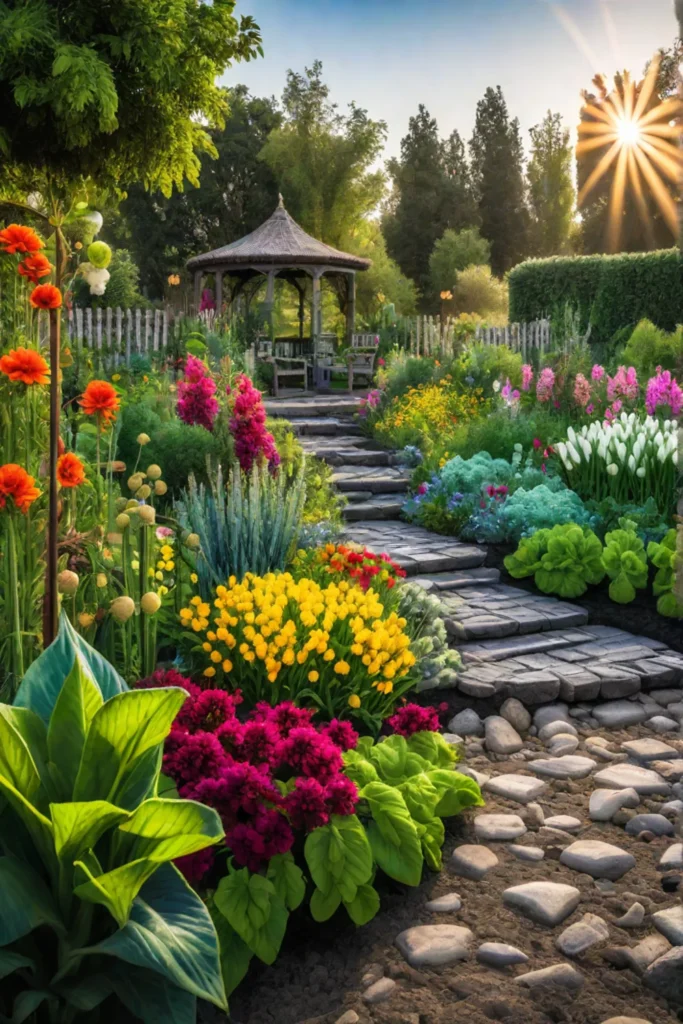
Regarding sustainability, embracing eco-friendly practices is another essential component of successful vegetable gardening. Composting your food and garden waste, implementing water-saving techniques, and reducing your reliance on energy-intensive tools can all positively impact the environment while enhancing the long-term health of your garden.
As a Southern belle with a deep appreciation for tradition and a modern, holistic approach to design, I believe sustainable gardening is the way of the future. By working in harmony with nature and minimizing our environmental footprint, we can create thriving, resilient vegetable gardens that will nourish us for years.
From Seed to Table: Your Rewarding Journey Awaits
Well, my fellow gardening enthusiasts, I hope this comprehensive guide has inspired you to embark on your vegetable gardening journey. From selecting the perfect location to harvesting and preserving your bounty, I’ve shared my best tips and tricks to help you cultivate a thriving, sustainable garden.

Remember, the key to success is a combination of careful planning, consistent care, and a willingness to adapt to the unique challenges that may arise. With a little patience and passion, you’ll be well on your way to enjoying the unparalleled satisfaction of growing fresh, nutritious produce.
So, what are you waiting for? Grab your gardening gloves, roll up your sleeves, and get ready to transform your backyard into a bountiful oasis of homegrown goodness. I can’t wait to hear about your gardening adventures!
